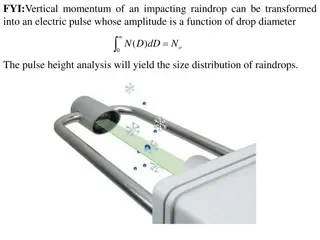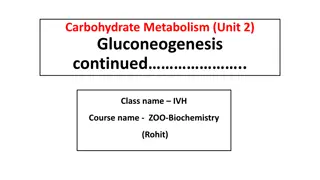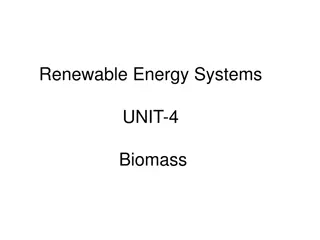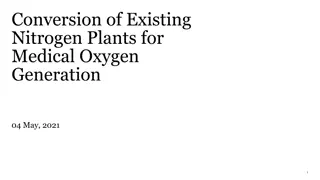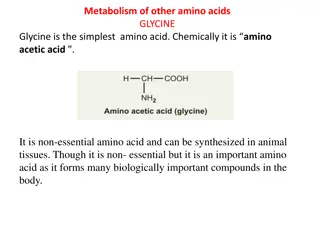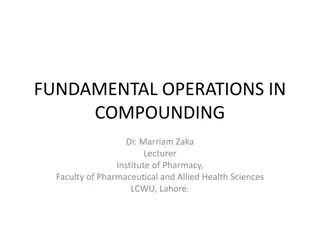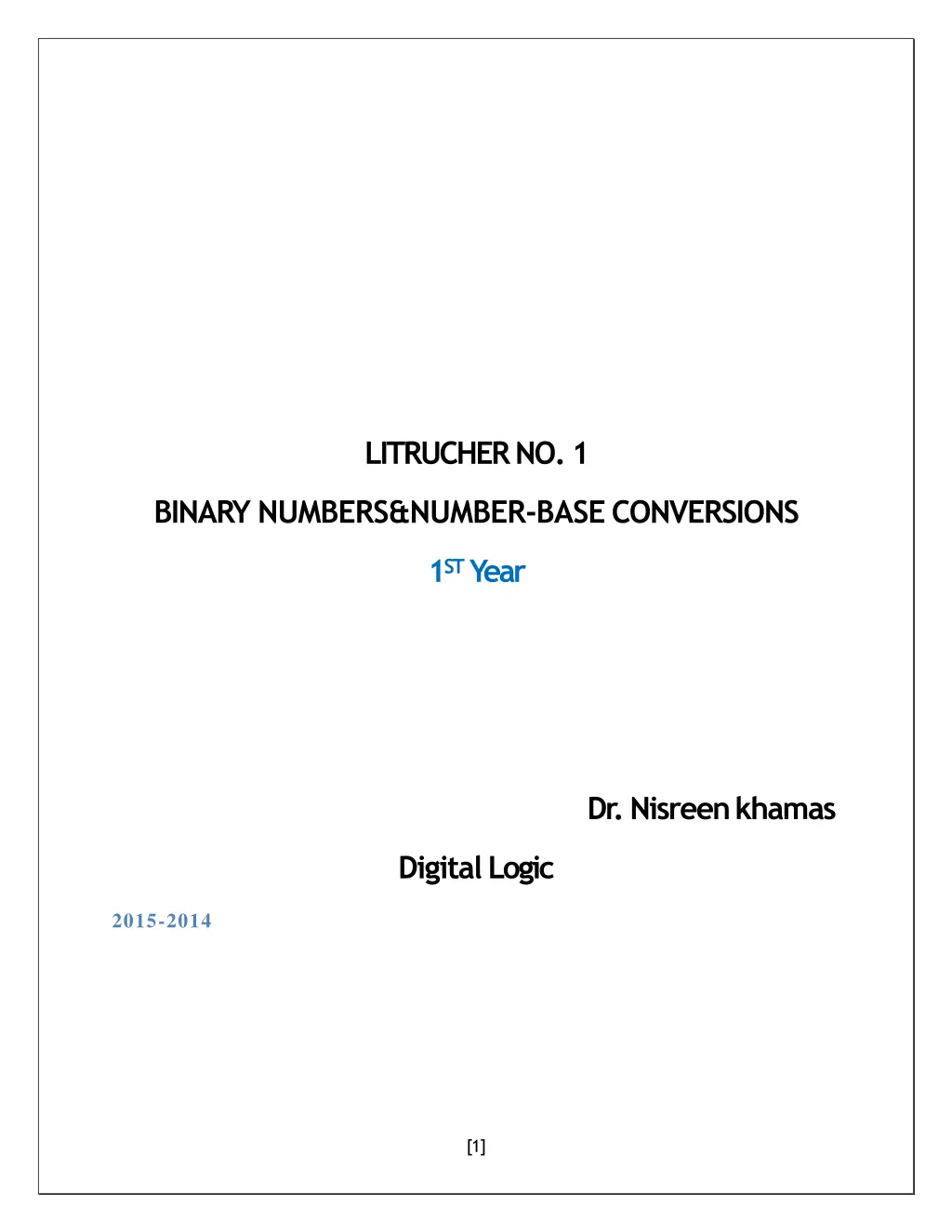
Binary Numbers and Number Base Conversions Guide
Learn about binary numbers, decimal numbers, and different number base systems including binary, decimal, octal, and hexadecimal. Understand how to convert numbers between different bases and the significance of coefficients in various number systems.
Download Presentation

Please find below an Image/Link to download the presentation.
The content on the website is provided AS IS for your information and personal use only. It may not be sold, licensed, or shared on other websites without obtaining consent from the author. If you encounter any issues during the download, it is possible that the publisher has removed the file from their server.
You are allowed to download the files provided on this website for personal or commercial use, subject to the condition that they are used lawfully. All files are the property of their respective owners.
The content on the website is provided AS IS for your information and personal use only. It may not be sold, licensed, or shared on other websites without obtaining consent from the author.
E N D
Presentation Transcript
LITRUCHER NO.1 BINARY NUMBERS&NUMBER-BASECONVERSIONS 1STYear Dr. Nisreenkhamas DigitalLogic 2015-2014 [1]
BINARYNUMBERS Adecimalnumbersuchas 7392 represents aquantityequalto7 thousands plus3 hundreds, plus 9 tens, plus 2 units. The thousands, hundreds, etc. are powers of 10 implied by the position of the coefficients. To be more exact, 7392 should be writtenas 7 X103+ 3 X102+9 X101+ 2 x10 However, the convention is to write only the coefficients and from their position deduce the necessary powers of 10. In general, a number with a decimal point is representedbyaseries ofcoefficientsas follows: a5a4a3a2a1a0.a-1a-2a-3 Theajcoefficientsareoneofthetendigits(0,1,2,...,9),andthesubscriptvaluej gives the place value and, hence, the power of 10 by which the coefficient must bemultiplied. 105a5 + 104a4 + 103a3 + 102a2 + lO1a1 + 100ao + 1O-1a-1 + 1O-2a-2 + 1O-3a-3 The decimal number system is said to be of base, or radix, 10 because it uses ten digits and the coefficients are multiplied by powers of 10. The binary system is a differentnumbersystem.Thecoefficientsofthebinarynumbers systemhavetwo possible values: 0 and 1. Each coefficient aj is multiplied by 21. For example, the decimal equivalent of the binary number 11010.11 is 26.75, as shown from the multiplicationofthecoefficientsbypowersof2: IX24+ I X23+ 0 X22+ 1 X21+ 0 x2 + Ix2-1+ 1 X2-2= 26.75 Ingeneral,anumberexpressedinbase-rsystemhascoefficientsmultipliedby powers ofr: an.rn + an-1.rn-1 +........+ a2.r2 + a1.r + a0 + a-1.r-1+a-2.r-2+ +a-m.r-m [2]
The coefficients aj range in value From 0 to r -1. To distinguish between numbers of different bases, we enclose the coefficients in parentheses and write a subscript equal to the base used (except sometimes for decimal numbers, where thecontentmakesitobviousthatitisdecimal).An exampleofabase-5 numberis (4021.2)5 = 4 X53+ 0 X52+ 2 X51+ 1 X50 + 2 X5-1=(511.4)10 that coefficient values for base 5 can be only 0, 1, 2, 3, and 4.The octal number systemisabase 8 systemthathaseightdigits:0,1,2,3,4,5,6,7.An exampleof an octal number is 127.4. To determine its equivalent decimal value, we expand thenumberinapowerseries withabaseof8: (127.4)8=1*82+2*81+7*80+4*8-1 =(87.5)10 Notethatthedigits8 and9 cannotappear inanoctalnumber. Itiscustomary toborrowtheneededr digitsforthecoefficientsfromthe Alphabetare used to supplement the 10 decimal digits when the base of the number is greater than 10. For example, in the hexadecimal (base 16) number system,thefirst10 digitsareborrowedfromthedecimalsystem.ThelettersA,B, C, D, E, and F are used for the digits 10, 11, 12, 13, 14, and 15, respectively. An example of a hexadecimal numberis (B65F)16=11*163+6*162+5*161+15*160=(46,687)10 As notedbefore,thedigitsinabinary numberarecalledbits.Whenabitisequal to 0, it does not contribute to the sum during the conversion. Therefore, the conversionfrombinarytodecimalcanbeobtainedbyaddingonlythenumbers withpowersoftwocorrespondingtothebitsthatareequalto1.For example, (110101)2=32+16+4+1=(53)10 There are four 1 s in the binary number. The corresponding decimal number is thesumofthefourpowersoftwo.Zeroandthefirst24 numbersobtainedfrom2 to the power of n are listed in Table 1.1 . Incomputerwork, 220 230 as K(kilo), as M (mega), as G(giga),and 4K=212=4,096 and 16M=224=16,777,216. 210is referredto as T (tera).Thus, 240 Computer capacity is usuallygiven [3]
inbytes.Abyteisequaltoeightbitsandcanaccommodate(i.e.,representthe code of) one keyboard character . A computer hard disk with four gigabytes of storage has acapacityof 4G=232 bytes (approximately 4 billion bytes). A terabyteis1024 gigabytes,approximately1 trillionbytes. Arithmetic operations with numbers in base r follow the same rules as for decimalnumbers.Whenabaseotherthanthefamiliarbase10 isused,onemust be careful to use only the r allowable digits. Examples of addition, subtraction, andmultiplicationoftwobinarynumbers areasfollows: The sum of two binary numbers is calculated by the same rules as in decimal, exceptthatthedigitsofthesuminany significantpositioncanbeonly0 or1.Any carry obtained in a given significant position is used by the pair of digits one significant position higher. Subtraction is slightly more complicated. The rules are still the same as in decimal, except that the borrow in a given significant position adds2 toaminuenddigit.(Aborrowinthedecimalsystemadds 10 toaminuend digit.) Multiplication is simple: The multiplier digits are always 1 or 0; therefore, thepartialproductsareequaleithertoashifted(left)copyofthemultiplicandor to0. [4]
NUMBER-BASECONVERSIONS Theconversionofanumberbaserto decimalisdonebyexpandingthenumberin a power series and adding all the terms as shown previously. We now present a generalprocedurefor thereverse operation ofconveningadecimalnumbertoa numberinbase,:Ifthenumberincludesaradixpoint,itisnecessary toseparate the number into an integer pm and a fraction part, since eachpartmust be converteddifferently. The conversion of decimalinteger to a number in base r is done by dividing the number and all successive quotients by r and accumulating theremainders.Thisprocedureisbestillustratedbyexample. EXAMPLE1.1 Convert decimal 41 to binary. First,41 is divided by 2 to give an integer quotient of 20 and a remainder of 12. Then the quotient is again divided by 2 to give a new quotient and remainder. The process is continued until the integer quotient becomes 0.Thecoefficients of the desired binary number are obtained from the remainders asfollows: Integer Quotient Remainder Coefficient 1 2a0=1 41/2= 20 + 20/2= 0 a1=0 10 + 10/2= 0 a2=0 5 + 1 2a3=1 5/2= 2 + 2/2= 0 a4=0 1 + 1 2 1/2= a5=1 Therefore, the answeris (41)10=(a5a4a3a2a1a0)2=(101001)2. [5]





